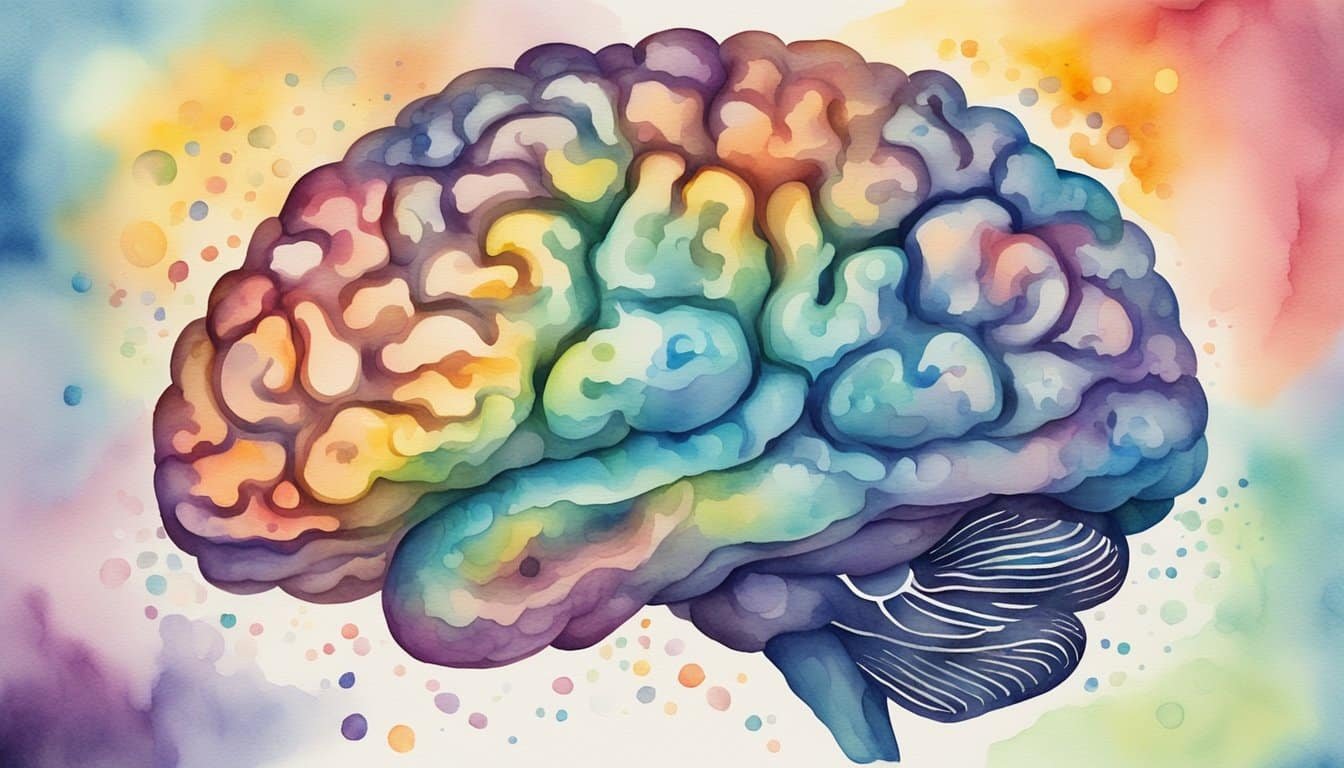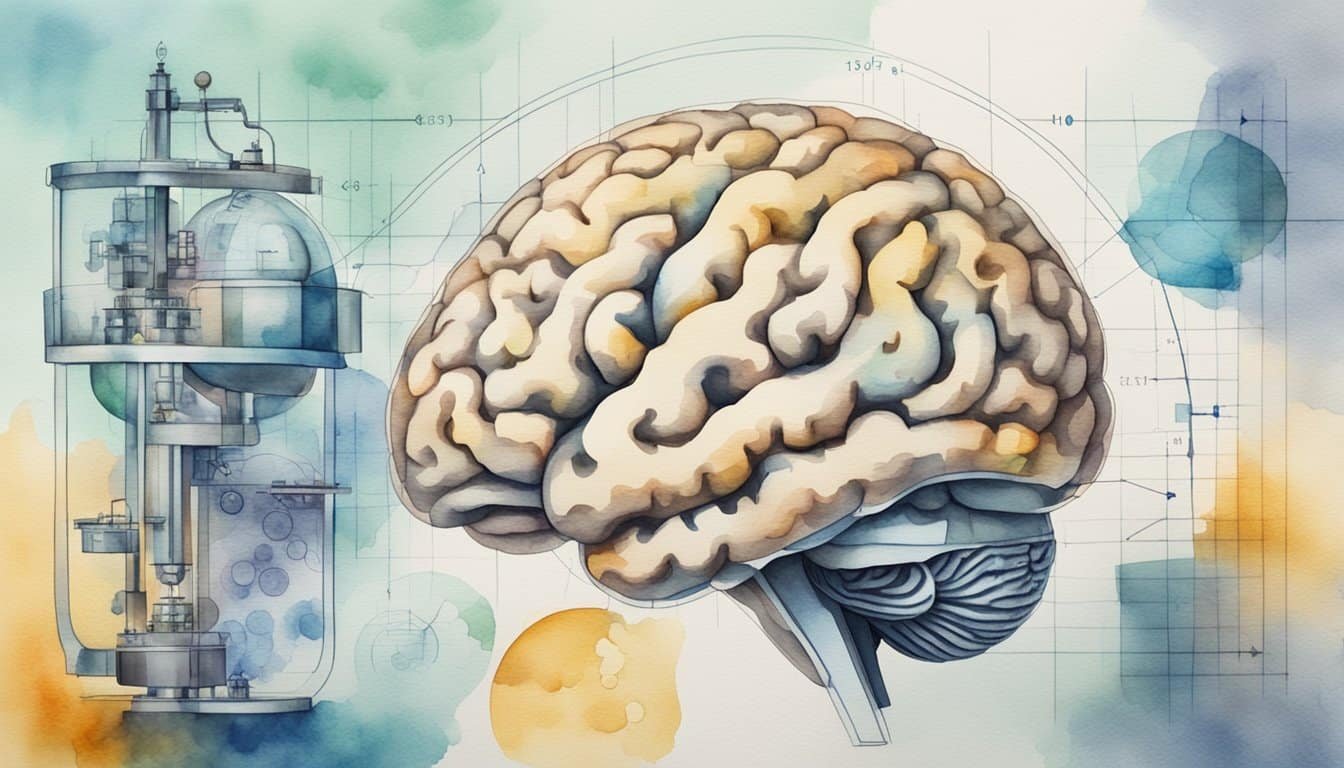Common Myths and Facts
One of the most enduring myths in the realm of neuroscience is the claim that humans only utilize 10 percent of their brain capacity. This concept is often attributed to elites like William James and Albert Einstein, but there’s no evidence that these figures actually made such a statement.
Myth: Only 10% of the Brain is in Use
Truth: Neuroscience has debunked this myth. People don’t use a mere 10 percent; they use virtually every part of the brain. The brain is active almost all the time. The 10 percent myth has been promoted by various sources, but it’s a misrepresentation of brain function.
Neuroscientists have found using brain-imaging technology that even for the simplest tasks, many parts of the brain are co-opted.
This ranges from active thinking to resting and even sleeping; different areas of the brain have different roles and are engaged during various mental states and activities.
The idea that the unused 90 percent is filled with untapped potential may sound optimistic, but it’s not rooted in reality. It’s more accurate – and exciting – to recognize that the brain is remarkably efficient, and a full 100 percent is put to good use.
No single part of the brain is dormant; rather, it’s a buzzing network that operates in a complex, interconnected way.
Knowledge and expertise can indeed grow, and brain functions can improve with practice and effort, but this isn’t because parts of the brain are laying dormant waiting to be awakened. It’s because the brain continually adapts and rewires itself – a phenomenon known as neuroplasticity.
Brain Function and Capacity

In exploring the depths of the human brain, we often uncover remarkable facets of its function and capacity. This complex organ is not only responsible for simple daily tasks but also for our most intricate thoughts and emotions.
Neurological Activity and Usage
The human brain is a powerhouse of activity, with its approximately 86 billion neurons constantly firing and communicating to execute various functions.
Positron emission tomography (PET) and functional magnetic resonance imaging (fMRI) are tools that demonstrate brain activity in real time. They reveal that we indeed use much more than the often-cited—but incorrect—10% of our brain.
Even during sleep, the brain is active, managing processes from memory consolidation to hormone regulation.
Effects of Lifestyle and Health Choices
The brain’s health and function are profoundly impacted by lifestyle and health choices.
Adequate hydration and a diet rich in antioxidants, vitamin E, and omega-3 fatty acids can support brain cell maintenance and function.
Regular exercise not only boosts brain health but also improves cognitive abilities.
Conversely, high cholesterol, excessive alcohol consumption, or conditions such as fetal alcohol syndrome can lead to brain damage and impair cognitive functions.
Maintaining brain health is essential for optimizing brain capacity and ensuring that all regions of the brain are ready for action when needed.
Scientific Research and Evidence

Scientific examination using advanced brain imaging techniques supports the dismissal of the old myth that we use only a small percentage of our brain. Studies consistently show that the entirety of the brain has a role, with various regions being responsible for different functions.
Modern Imaging Techniques
Functional magnetic resonance imaging (fMRI) and other forms of MRI have revolutionized neuroscience’s understanding of brain function.
These tools allow scientists to observe blood flow and brain activity, linking specific tasks to engagement of diverse brain regions.
Through these methods, it’s clear that much more than 10% of the brain is in use.
For instance, simple actions like clenching a hand or smiling involve various parts of the brain, from motor areas to those governing motivation and emotion.
Cognitive and Behavioral Studies
Behavioral and cognition studies track how mental abilities like perception, memory, and language engage numerous neuron networks.
Even during rest, brain scans reveal a symphony of activity across the entire brain, including regions responsible for cognition and perception, highlighting the brain’s plasticity and the limits of no single percentage of brain use.
These findings suggest the neuroplastic nature of the brain, adapting and rewiring itself constantly, a trait important for brain health.
Potential of the Human Brain

The human brain is a remarkable organ, full of potential that extends beyond what many of us might imagine. Neuroscience has debunked the myth that we use only 10% of our brain; in fact, we use 100 percent of the brain, even when performing simple tasks. Every part of the brain has a known function.
One aspect of the brain’s potential is its plasticity. This is the organ’s ability to change and adapt as a result of experience, which is key to learning new skills, like playing a musical instrument or mastering a new language.
From the perspective of evolution, the human brain has grown to have a particularly large cerebral cortex compared to other animals, which is associated with higher-order functions such as reasoning, planning, and problem-solving.
The brain’s evolution has been a game of maximizing efficiency. Despite its complexity, the brain operates on a principle of sparseness; that is, while it has the capacity for massive parallel processing, at any one time it uses the minimal number of neurons necessary to perform a task.
Then there’s the untapped genius, or brainpower, that many believe we all possess.
It’s not that we have unused portions of our brain, but rather that the potential for exceptional cognitive abilities like prodigious memory or musical talent may be dormant or undeveloped in most individuals.
Lastly, the concept of neuroplasticity shows that the brain is continually reshaping itself in response to learning and experience. It remains a powerful source of potential, fundamentally enabling us to adapt, learn, and evolve throughout our lives.
Cultural Impact and Misconceptions

The idea that humans only use a small fraction of their brains is a stubborn myth, one that has been widely debunked by neuroscience. Despite this, the myth persists, largely due to its continual portrayal in pop culture.
Hollywood blockbusters, like “Lucy” and “Limitless,” typically showcase protagonists unlocking their full cerebral potential through some fantasy or science fiction trope, which helps propel the misconception.
In the realms of the self-help industry and American psychology, figures such as Dale Carnegie have had a substantial influence. Carnegie’s seminal work, How to Win Friends and Influence People, didn’t directly peddle the 10% brain use myth, but it did engender a belief that we could tap into latent mental powers for personal success.
Cultural artifacts, like subliminal messages, also feed into the idea that there’s untapped potential lurking in our grey matter. This notion isn’t just a harmless daydream but can have real-world implications, influencing educational strategies and potentially the treatment of conditions like traumatic brain injury, as noted in research regarding ethnic minorities with TBI.
The phenomenon isn’t limited to any one culture or country, and studies have shown that such misconceptions are a global issue.
Confronting these myths is crucial for a clearer understanding of our actual cognitive capabilities and to prevent the spread of misinformation that can hinder scientific education and progress.

